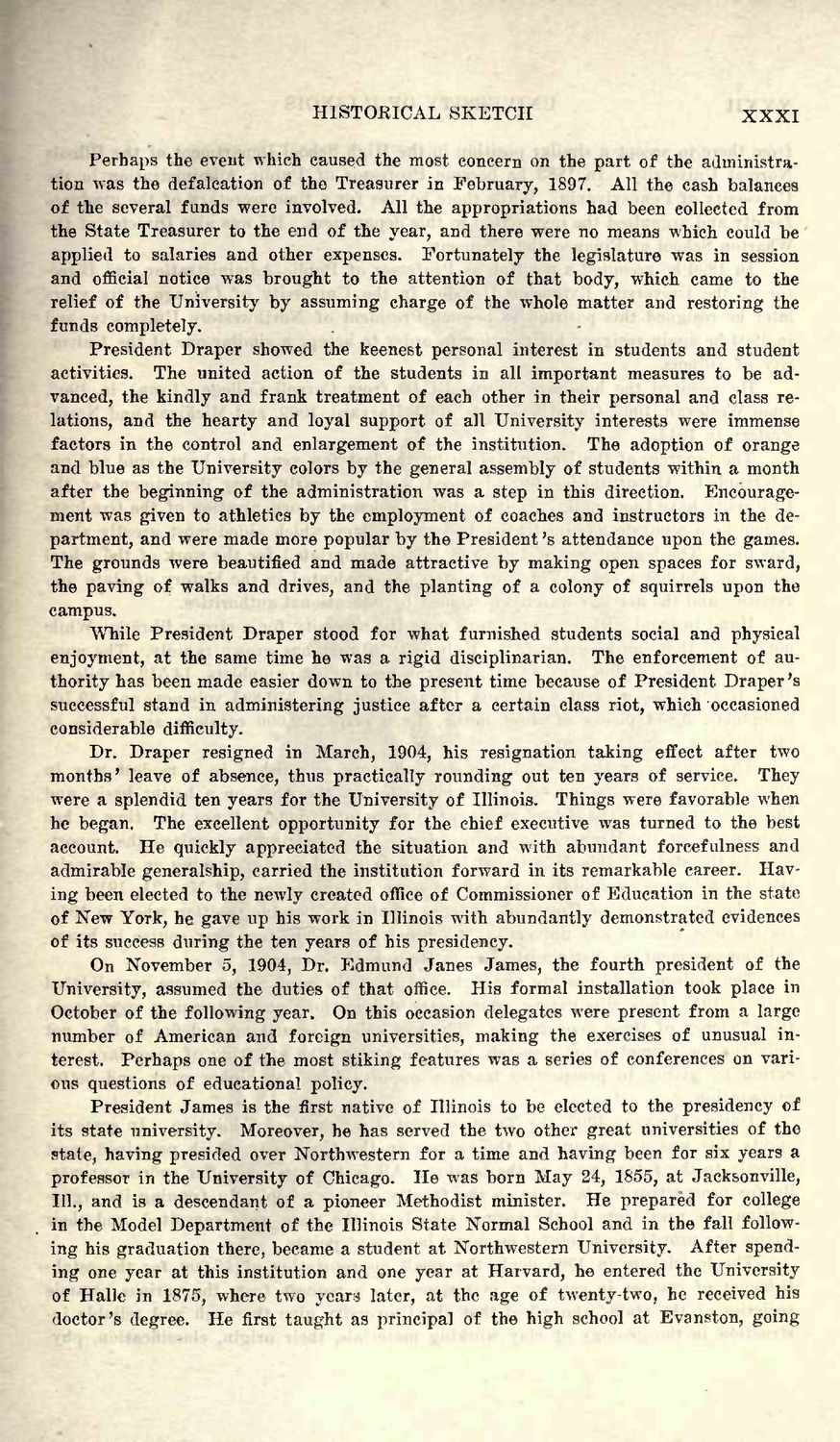| |
| |
Caption: Book - Early History of University (1916)
This is a reduced-resolution page image for fast online browsing.

EXTRACTED TEXT FROM PAGE:
HISTORICAL SKETCH XXXI Perhaps the event which caused the most concern on the part of the administration was the defalcation of the Treasurer in February, 1897. All the cash balances of the several funds were involved. All the appropriations had been collected from the State Treasurer to the end of the year, and there were no means which could be applied to salaries and other expenses. Fortunately the legislature was in session and official notice was brought to the attention of that body, which came to the relief of the University by assuming charge of the whole matter and restoring the funds completely. President Draper showed the keenest personal interest in students and student activities. The united action of the students in all important measures to be advanced, the kindly and frank treatment of each other in their personal and class relations, and the hearty and loyal support of all University interests were immense factors in the control and enlargement of the institution. The adoption of orange and blue as the University colors by the general assembly of students within a month after the beginning of the administration was a step in this direction. Encouragement was given to athletics by the employment of coaches and instructors in the department, and were made more popular by the President's attendance upon the games. The grounds were beautified and made attractive by making open spaces for sward, the paving of walks and drives, and the planting of a colony of squirrels upon the campus. While President Draper stood for what furnished students social and physical enjoyment, at the same time he was a rigid disciplinarian. The enforcement of authority has been made easier down to the present time because of President Draper 'a successful stand in administering justice after a certain class riot, which occasioned considerable difficulty. Dr. Draper resigned in March, 1904, his resignation taking effect after two months' leave of absence, thus practically rounding out ten years of service. They were a splendid ten years for the University of Illinois. Things were favorable when he began. The excellent opportunity for the chief executive was turned to the best account. He quickly appreciated the situation and with abundant forcefulness and admirable generalship, carried the institution forward in its remarkable career. Having been elected to the newly created office of Commissioner of Education in the state of New York, he gave up his work in Illinois with abundantly demonstrated evidences of its success during the ten years of his presidency. On November 5, 1904, Dr. Edmund Janes James, the fourth president of the University, assumed the duties of that office. His formal installation took place in October of the following year. On this occasion delegates were present from a large number of American and foreign universities, making the exercises of unusual interest. Perhaps one of the most stiking features was a series of conferences on various questions of educational policy. President James is the first native of Illinois to be elected to the presidency of its state university. Moreover, he has served the two other great universities of the stale, having presided over Northwestern for a time and having been for six years a professor in the University of Chicago. He was born May 24, 1855, at Jacksonville, III., and is a descendant of a pioneer Methodist minister. He prepared for college in the Model Department of the Illinois State Normal School and in the fall following his graduation there, became a student at Northwestern University. After spending one year at this institution and one year at Harvard, he entered the University of Halle in 1875, where two years later, at the age of twenty-two, he received his doctor's degree. He first taught as principal of the high school at Evanston, going
| |